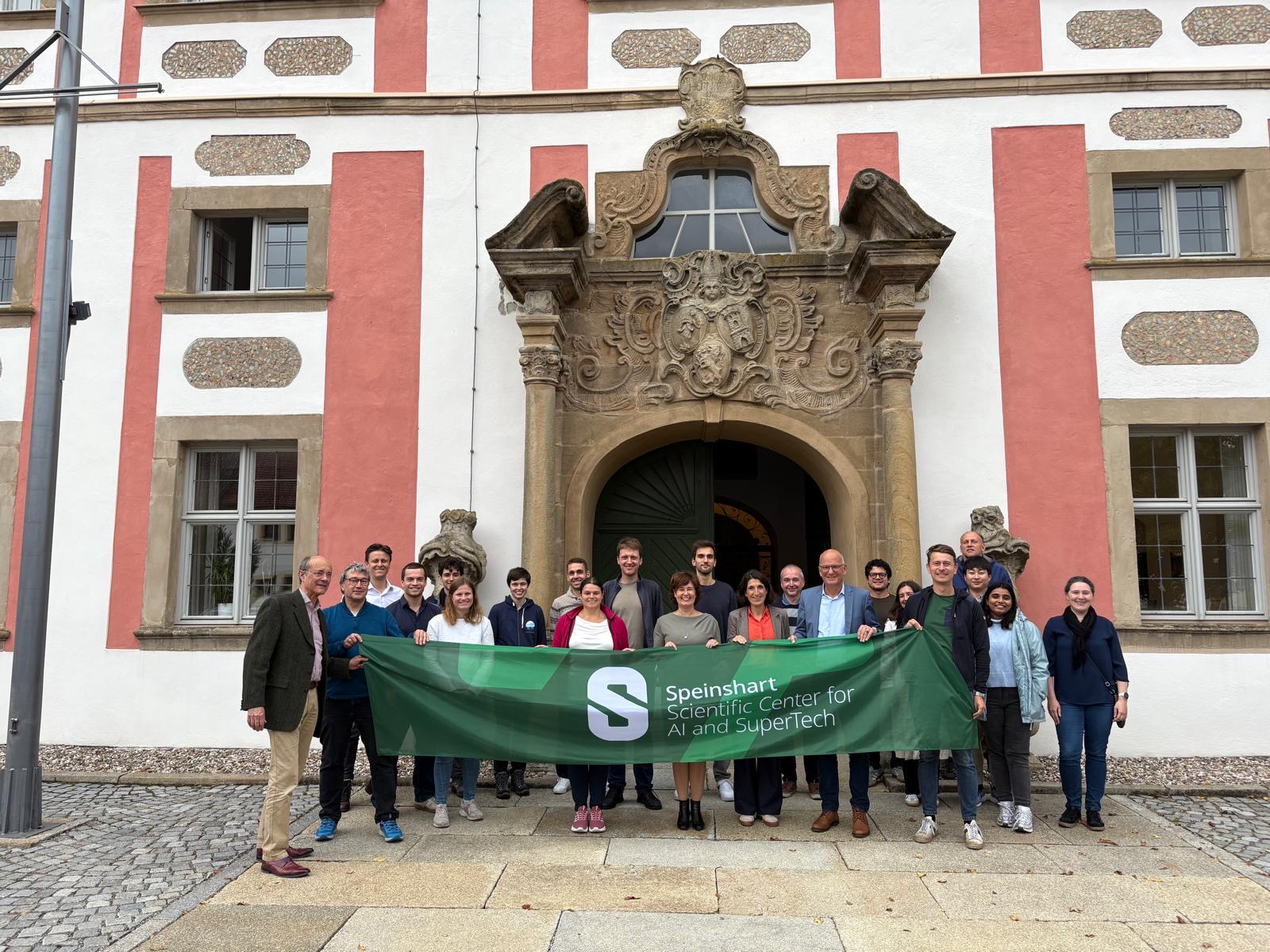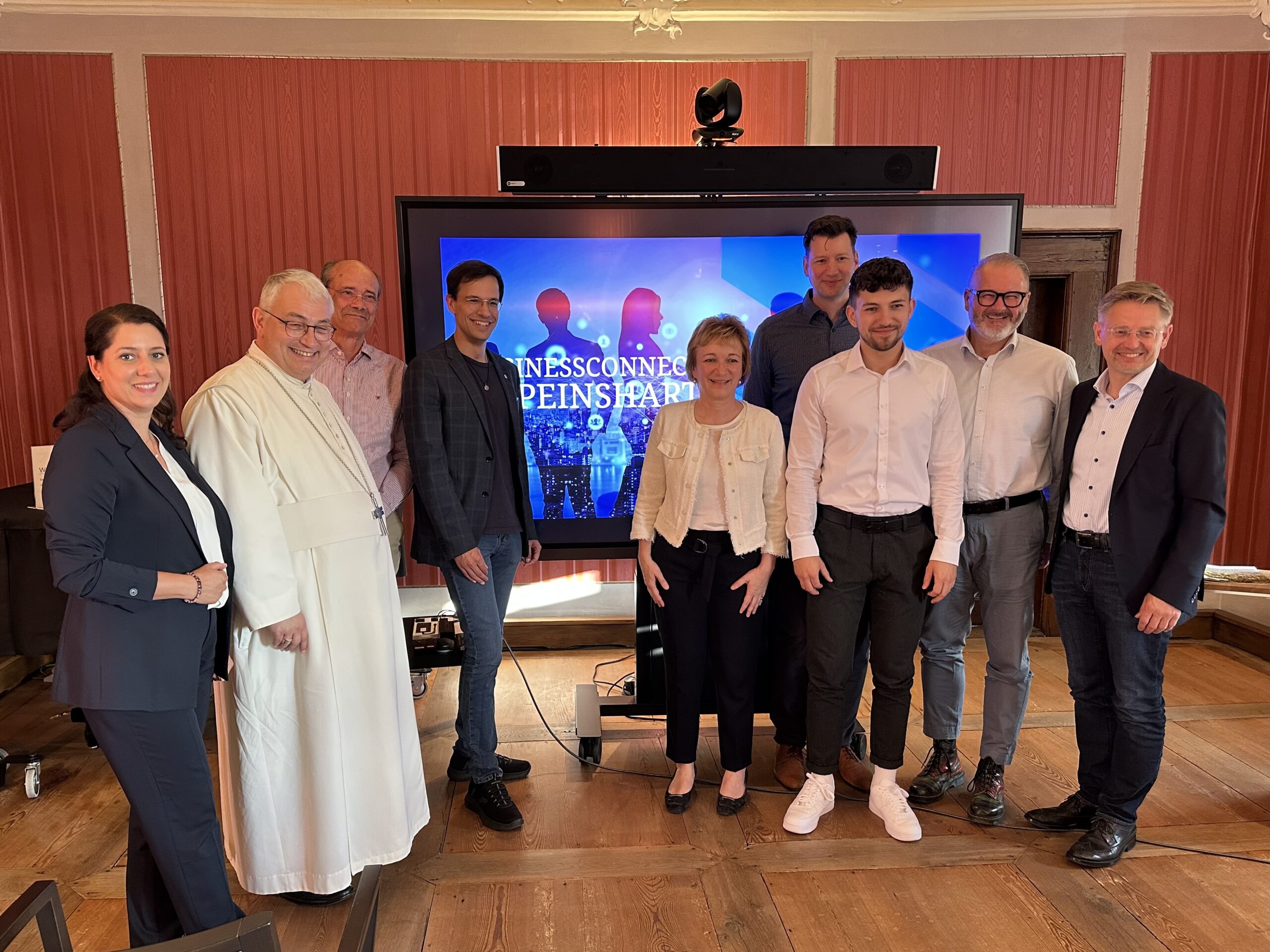
From September 24–26, 2025, the Speinshart Scientific Centre for AI and SuperTech (SSC) hosted a workshop dedicated to the intersection of Machine Learning (ML) and Geosciences. Organized by Tijana Janjic, Marcel Oliver, and Nadja Ray, the event brought together researchers from across Europe to discuss the latest developments, challenges, and perspectives in this exciting field.
A Wide Range of Topics
Participants explored a broad spectrum of questions, including:
- the use of ML in geophysical modeling,
- methods of uncertainty quantification,
- data assimilation and bias analysis,
- as well as explainable AI in geoscientific contexts.
One theme became immediately clear: progress in this domain depends on close collaboration between ML experts and geoscientists.
Day 1 – Arrival and First Impulses
The workshop began on Wednesday with an informal get-together and the first talks. Thomas Mortier (Ghent University) presented methods to improve weather forecasts using conformal prediction intervals, while Maryam Ramezani Ziarani (KU Eichstätt-Ingolstadt) discussed the role of ML in simplified shallow water models. A subsequent discussion focused on the prerequisites for successfully applying ML in geosciences .
Day 2 – Applications and Case Studies
Thursday highlighted a variety of applications:
- Karoline Rummel (IOW Warnemünde) demonstrated how LSTM networks can be used for real-time estimation of salt intrusion.
- Katharina Holube (University of Hamburg) introduced data-driven approaches to quantify energy transfers in the atmosphere.
- Additional talks covered ergodic theory for ocean drifter data, origin identification of raw materials, and graph-based deep learning for geomorphological mapping.
After a day of intensive discussions, participants continued their conversations on a communal hike – a refreshing way to extend the scientific exchange beyond the lecture hall .
Day 3 – Outlook and Networking
Friday began with a guided tour of Speinshart Monastery before moving on to the final sessions:
- Sergiy Vasylkevych (University of Hamburg) spoke on error growth in forecasting models.
- Sarah Eberle-Blick (KU Eichstätt-Ingolstadt) presented new ML-based approaches to solving inverse problems.
- Other contributions addressed the assimilation of radar data and the recovery of energy spectra from incomplete observations.
The workshop concluded with a lively discussion on the future of ML in geosciences, underscoring a clear message: building robust, explainable, and broadly applicable models will only be possible through genuine interdisciplinary collaboration .
Conclusion
The workshop impressively demonstrated just how dynamic and multifaceted the field of geophysical modeling with ML has become. The combination of talks, discussions, and personal exchange provided valuable impulses and strengthened collaboration across disciplines.
We look back with gratitude on three inspiring days – and forward with excitement to the next steps in this joint research endeavor.





Join the conversation